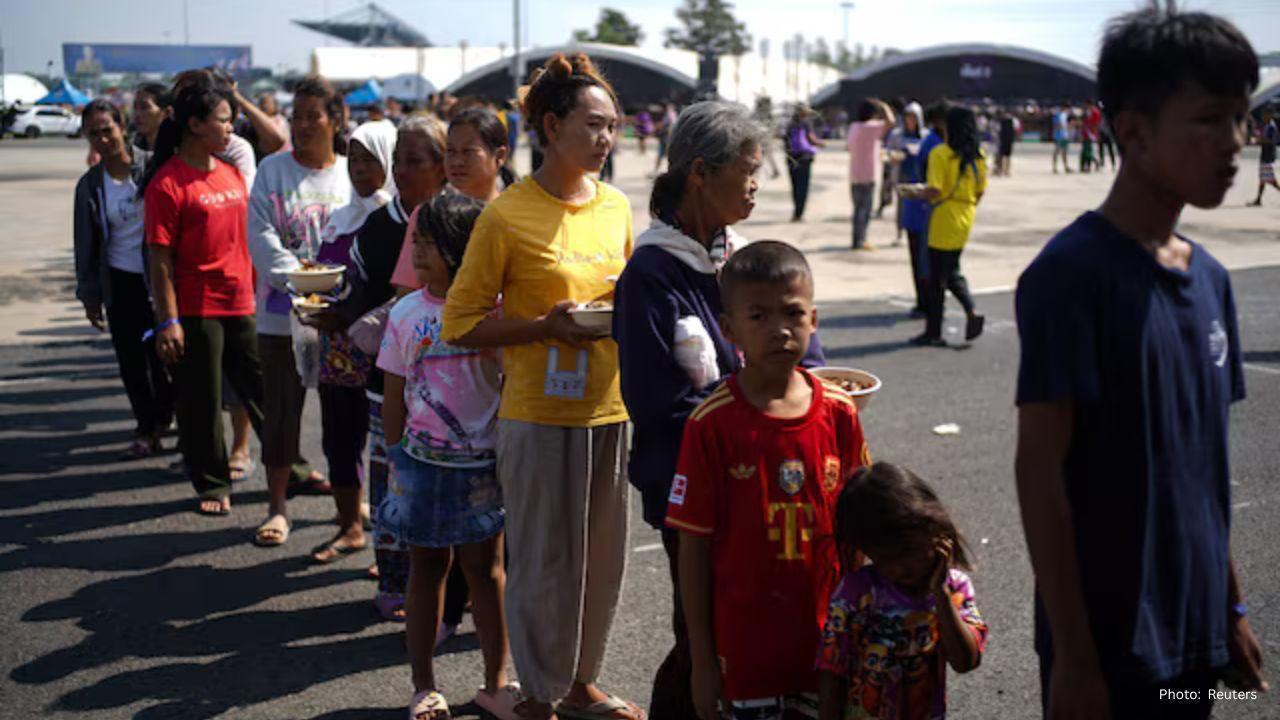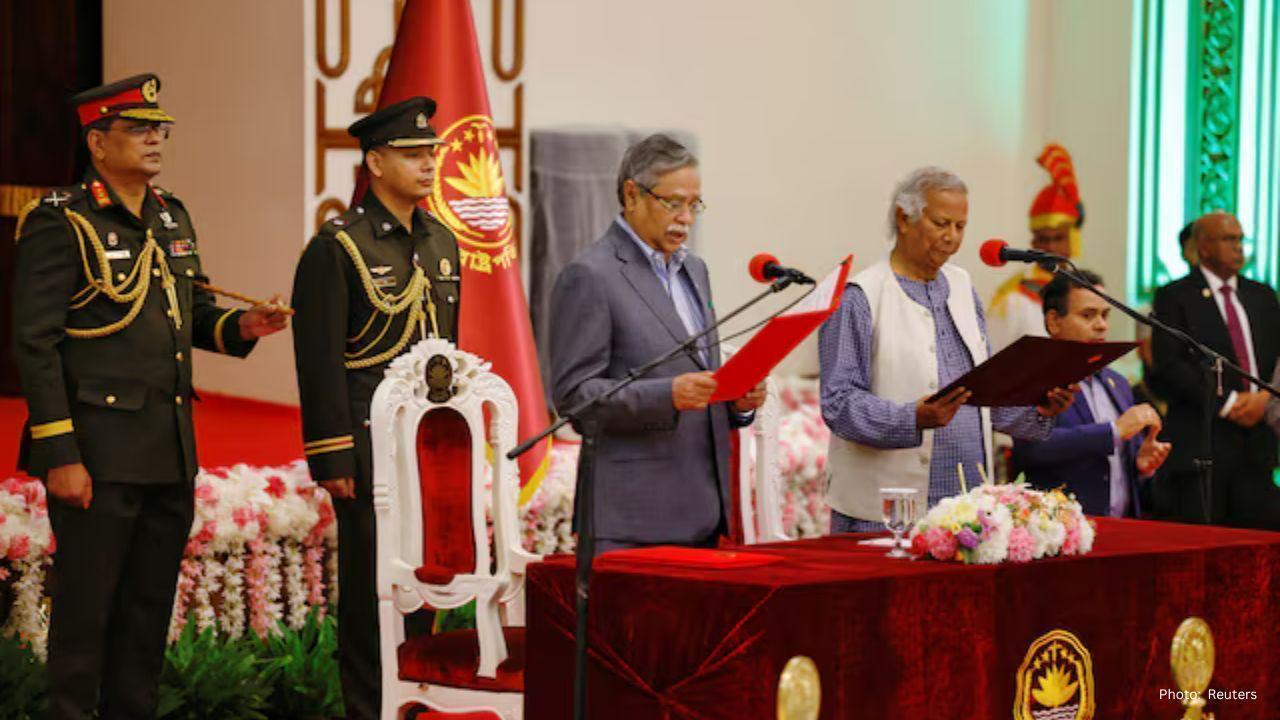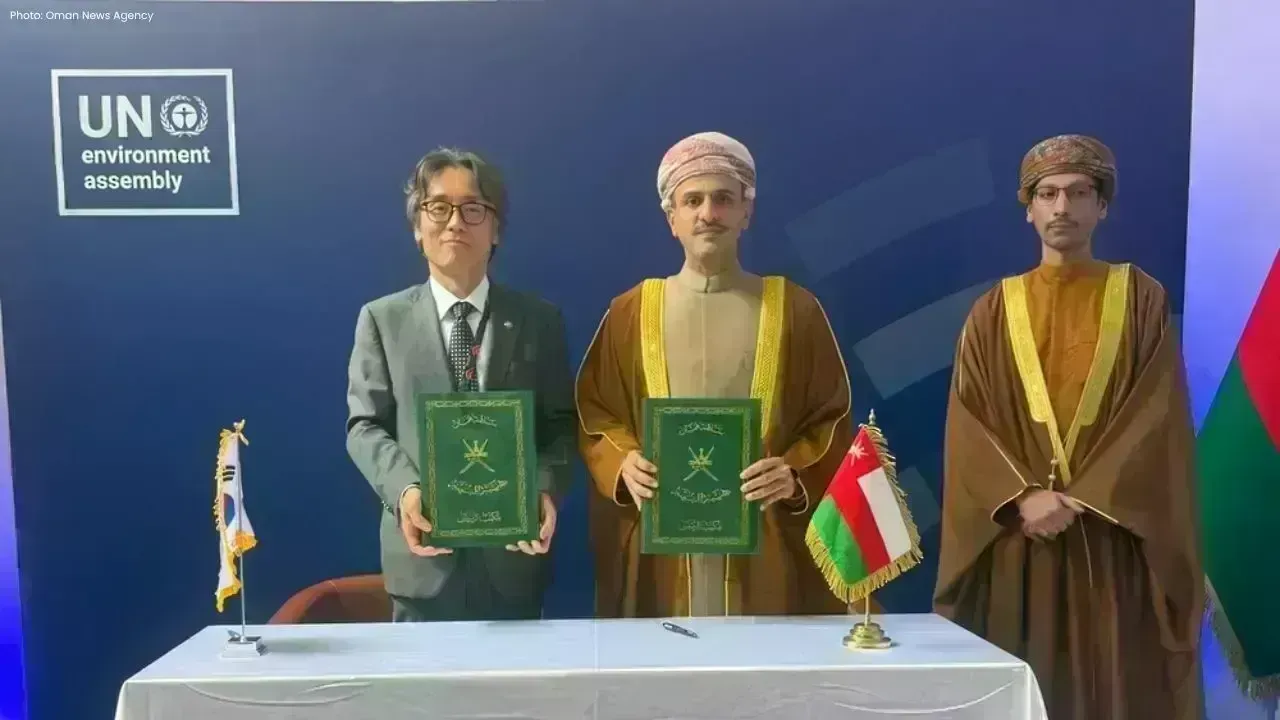
Post by : Priya
Photo:Reuters
In a major leap toward clean energy, South Korea has begun developing one of the world's largest floating wind farm projects in the Yellow Sea. This bold initiative aims to reduce the country’s heavy dependence on fossil fuels while strengthening its role in the global battle against climate change.
This landmark project signals South Korea’s strong commitment to transforming its energy sector. With its strategic location and technological expertise, the country is positioning itself as a global leader in offshore wind energy—especially the more advanced floating type that allows for turbines to be installed in deeper waters.
A New Era for Renewable Energy in Asia
South Korea’s floating wind farms represent a new chapter in renewable energy for Asia. Unlike traditional offshore wind turbines fixed to the ocean floor, floating wind turbines are anchored by chains and float on the sea’s surface. This makes them suitable for deeper seas where wind speeds are stronger and more consistent.
The Yellow Sea, with its vast area and ideal wind conditions, is the perfect location. Situated along the country's west coast, it provides the space and wind patterns necessary for large-scale wind energy production. Once operational, the farms are expected to generate 6 gigawatts (GW) of electricity—enough to power nearly 6 million households.
According to officials, the project could prevent the release of more than 10 million tonnes of carbon dioxide annually, significantly contributing to the country’s climate goals.
Government’s Commitment to a Greener Future
The floating wind farm project is part of South Korea’s broader plan to achieve net-zero carbon emissions by 2050. This goal means the country aims to balance the amount of greenhouse gases it emits with the amount it removes from the atmosphere. To meet this target, the government is making massive investments in clean energy, including wind, solar, and hydrogen.
The Ministry of Trade, Industry and Energy has confirmed an investment of over $25 billion for the full project. This includes costs for research, equipment, construction, grid integration, and community development.
“Floating wind farms allow us to use the power of nature while protecting the environment. It’s the future of energy, and we are proud to lead,” said a senior ministry official.
Economic Benefits and Job Creation
In addition to fighting climate change, the floating wind farm project is expected to bring strong economic benefits. It will create thousands of high-skilled jobs in engineering, construction, maintenance, and environmental monitoring.
Local businesses are being included in the supply chain, from manufacturing turbine parts to providing marine services. This means more income for local communities, especially in coastal areas that have long relied on fishing or port-related industries.
Furthermore, by using domestic companies for most of the work, South Korea aims to strengthen its green technology sector. This will not only support the economy but also boost the country's global competitiveness in clean energy exports.
Environmental Protection and Local Cooperation
Building large structures at sea raises understandable concerns about the marine environment. South Korean authorities have promised that the floating wind farms will follow strict environmental standards.
Environmental impact assessments have already been conducted. Marine biologists and engineers are working together to ensure that the construction does not harm fish stocks, underwater ecosystems, or local biodiversity.
Moreover, the government is working closely with fishing communities and local residents to address their concerns. Some fishermen were initially worried that the turbines might limit fishing zones. In response, authorities are adjusting turbine placement and offering compensation and alternative livelihood support where needed.
Why Floating Wind Farms Matter
Floating wind farms are seen as the next big thing in renewable energy. Traditional offshore wind farms are limited to shallow waters, usually no deeper than 60 meters. But many countries, including South Korea, have deep coastal seas that make fixed wind turbines impossible to install.
Floating turbines solve this problem. They are built on large floating platforms that are anchored to the seabed by strong cables. These platforms are designed to stay stable even during storms.
The technology is relatively new but has already shown promising results in countries like Norway, the UK, and Japan. South Korea’s project is expected to be the largest of its kind in Asia, and among the largest in the world.
International Impact and Global Climate Goals
South Korea’s move comes at a time when the world is racing to cut carbon emissions. With the impacts of climate change growing—such as heatwaves, floods, and rising sea levels—governments are under pressure to shift to cleaner energy sources.
The United Nations has urged countries to stop building new coal plants and reduce greenhouse gas emissions by at least 45% by 2030. South Korea’s floating wind farms could play a key role in helping the country meet these international targets.
Other countries in the region—such as Japan, China, and Taiwan—are also exploring floating wind power. Experts believe South Korea’s success could serve as a model for these nations, speeding up Asia’s transition to green energy.










OpenAI Highlights Growing Cybersecurity Threats from Emerging AI Technologies
OpenAI has raised alarms about the increasing cyber risks from its upcoming AI models, emphasizing s

Manchester City Triumphs 2-1 Against Real Madrid, Alonso Faces Increased Scrutiny
Manchester City secured a 2-1 victory over Real Madrid, raising concerns for coach Xabi Alonso amid

Cristiano Ronaldo Leads Al Nassr to 4-2 Victory Over Al Wahda in Friendly Face-Off
Ronaldo's goal helped Al Nassr secure a 4-2 friendly win over Al Wahda, boosting anticipation for th

Landon Donovan Challenges Australia Coach on World Cup Prospects
Landon Donovan counters Australia coach Tony Popovic’s optimism for the World Cup, expecting an earl

Mercedes-Benz Forms Landmark Partnership with WTA
Mercedes-Benz and the WTA unveil a significant partnership effective January 2026, with major invest

Abhishek Addresses Divorce Rumours Concerning His Family
Abhishek Bachchan confirms that daughter Aaradhya remains oblivious to divorce speculations, focusin